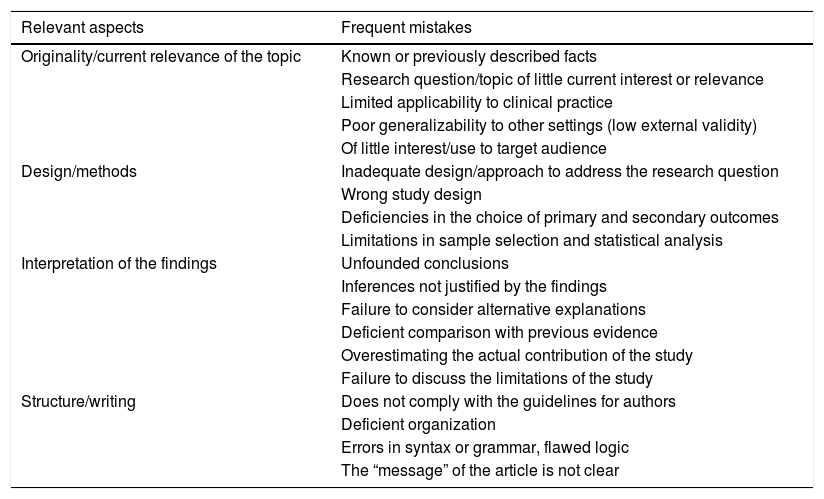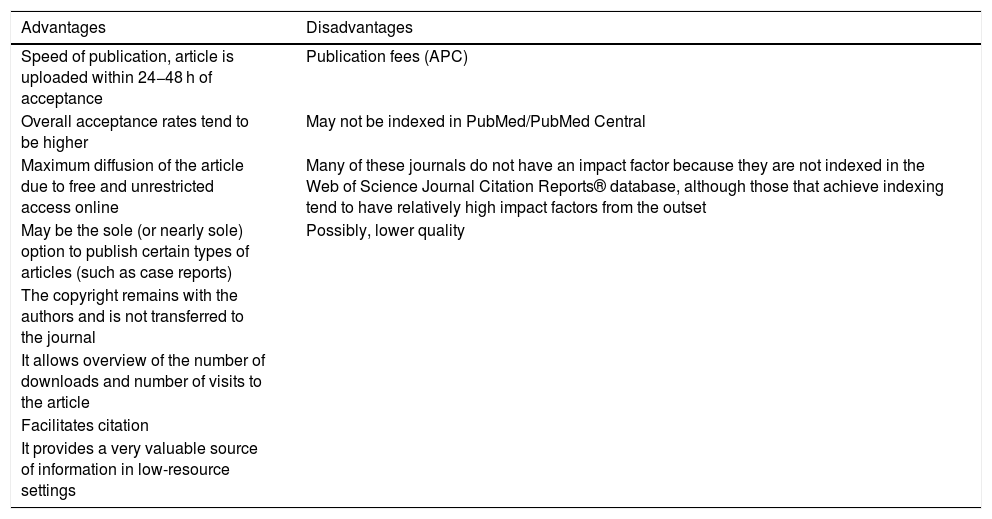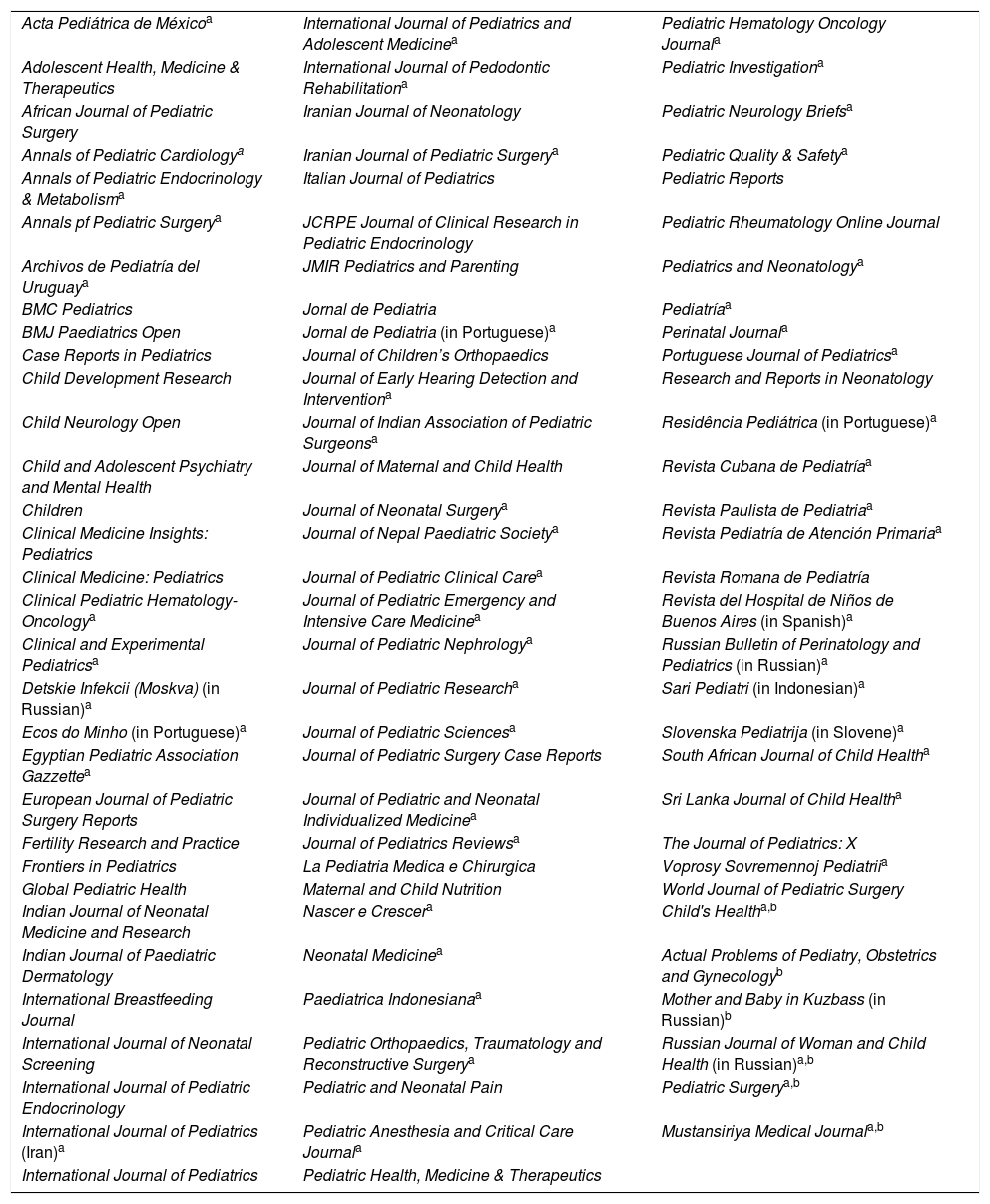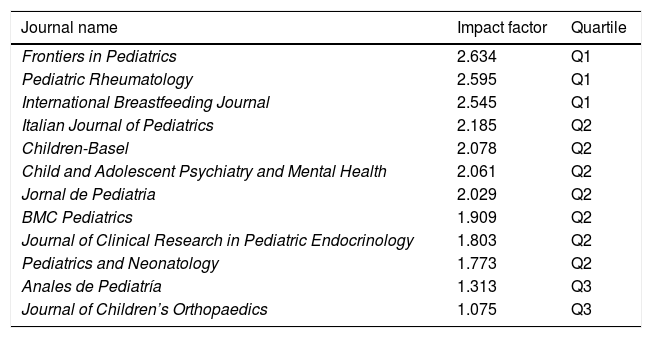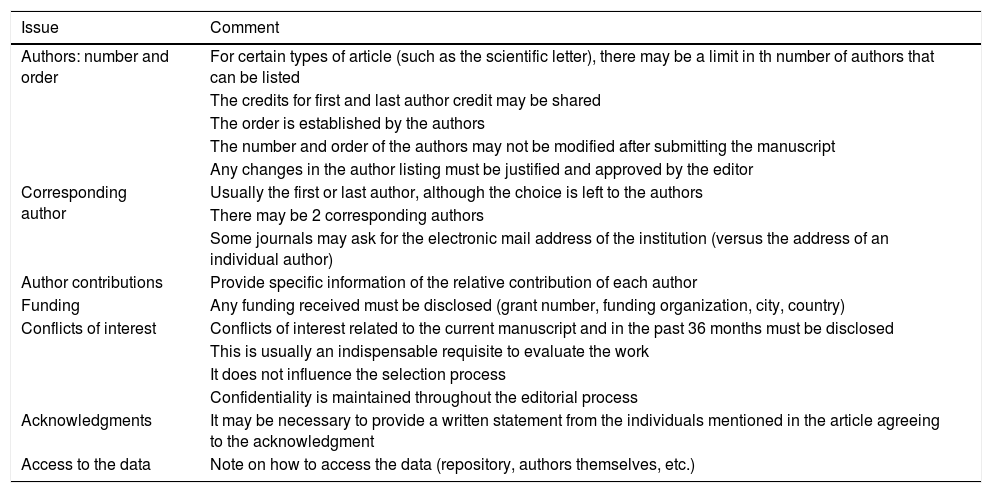To publish articles in prestigious scientific journals is not a simple task, particularly because of three main reasons: the difficulty for designing and performing competitive and high quality research, the high rates of rejection in most high-impact journals, and the absence of systematized training in the methodology of biomedical publications in the curricular programs. If to this is added the progressive complexity of the instructions for authors and the formal requirements that most journals impose, it is logical that there is discouragement among potential authors. On the other hand, the pressure and the demand for authorship of scientific articles to be able to get academic and professional positions of a certain level are increasing. However, what at first glance seems a gloomy perspective, it is not so much if some key aspects related to the structure and writing of manuscripts and the systematics of the editorial process of the journals are known and applied, which, in short, continue being in force since the aphorism «publish or perish» became popular at the beginning of the last century. As described in this article, the steps to follow are straightforward, logical, and interrelated, so getting off to a good start and completing the various stages properly and in the right order always represents a clear advantage in ensuring the final success of having your paper accepted.
Publicar artículos en revistas científicas de prestigio no es una tarea fácil, especialmente por tres motivos principales: la dificultad para diseñar y ejecutar investigaciones competitivas de calidad, las altas tasas de rechazo de la mayoría de las revistas de alto impacto, y la falta de formación sistematizada sobre la metodología de las publicaciones biomédicas en los programas curriculares. Si a ello se añade la progresiva complejidad de las instrucciones para los autores y los requerimientos formales que imponen la mayoría de las revistas, es lógico que cunda el desánimo. Por otra parte, la presión y la exigencia de autoría de artículos científicos para poder concurrir a cargos académicos y profesionales de cierto nivel son cada vez mayores. Sin embargo, lo que a simple vista parece un panorama sombrío, no lo es tanto si se conocen y se aplican algunos aspectos clave relativos a la estructura y redacción de los manuscritos y a la sistemática del proceso editorial de las revistas que, en síntesis, continúan siendo vigentes desde que el aforismo «publish or perish» se hizo popular a principios del siglo pasado. Tal como se describe en este artículo, los pasos a seguir son sencillos, lógicos e interdependientes, de modo que empezar bien y cumplimentar las diversas etapas adecuadamente y en el orden preciso siempre supone una clara ventaja para asegurar el éxito final de la aceptación del trabajo.
Paediatrics journals, like journals in any other speciality, play a key role in the main objective of contributing to advancing scientific knowledge, providing sufficient evidence to support decision-making and changes in clinical practice. Journals are useful to paediatricians and the larger scientific community in their double role as sources to increase knowledge and vehicles to disseminate the results of research.
On the other hand, we ought to discuss some of the current circumstances. For example, the immoderate growth of scientific evidence, which seems to not be reaching a plateau or have any bounds, as it is estimated that 75 randomised clinical trials and 11 systematic reviews are published each day, while 200 clinical trials are registered each week.1 On the other hand, there is the low reproducibility of the published studies (in a survey of 1576 researchers, 70% stated they had not been able to replicate the experiments of other researchers2), associated with the pressure to publish and the selective publication of data. In the field of paediatric journals, the scientific relevance of the studies in relation to the particular interests of the readership is a key factor in their selection. Yet, many journals with a high impact at the international level that rank in the first quartile acknowledge that they received many more high-quality manuscripts that they are able to accommodate in the number of pages contained in each issue, and this excess supply contributes to lower acceptance rates: for example, the manuscript acceptance rate is approximately 10% for the journal Pediatrics3 and 18.9% for the Journal of Pediatrics in 2019.4 The movement of open access journals, secondary or companion journals to consolidated, prestigious journals, emerged precisely to create room for scientifically relevant works that cannot be fitted in the main journal.
In addition to the surplus of studies, there are multiple reasons for rejection that mainly have to do with the scientific relevance and originality of the research, the methodological approach and strategy of analysis and flaws in the presentation, structure and writing of the manuscript (Table 1).
Main reasons for the rejection of manuscripts submitted for publication to paediatrics journals.
| Relevant aspects | Frequent mistakes |
|---|---|
| Originality/current relevance of the topic | Known or previously described facts |
| Research question/topic of little current interest or relevance | |
| Limited applicability to clinical practice | |
| Poor generalizability to other settings (low external validity) | |
| Of little interest/use to target audience | |
| Design/methods | Inadequate design/approach to address the research question |
| Wrong study design | |
| Deficiencies in the choice of primary and secondary outcomes | |
| Limitations in sample selection and statistical analysis | |
| Interpretation of the findings | Unfounded conclusions |
| Inferences not justified by the findings | |
| Failure to consider alternative explanations | |
| Deficient comparison with previous evidence | |
| Overestimating the actual contribution of the study | |
| Failure to discuss the limitations of the study | |
| Structure/writing | Does not comply with the guidelines for authors |
| Deficient organization | |
| Errors in syntax or grammar, flawed logic | |
| The “message” of the article is not clear |
From this point, the article summarises 10 key points that paediatricians should take into account in the drafting of a manuscript to be able to compete successfully in the screening performed by high-impact journals to accept and publish outstanding works.
Publishing when there is something worth conveyingThe scientific article is the final product of a research project. Needless to say, the odds that a manuscript will be published depend directly and nearly exclusively on the quality of the performed research, so it is essential to prioritise the study conception and design and ensure the suitability of the study protocol. Therefore, it is important to publish when the quality and suitability of the planned and performed study guarantee and interest in the dissemination of its findings, or, in plain terms, when “one has something to say” of scientific interest, that contributes knowledge and is useful based on the conceptual and methodological validity of the research.
For this to be possible, authors must have a multidisciplinary and integral understanding of the fundamentals of epidemiology and statistics, the characteristics and function of journals, the key stages in the editorial and peer review processes, ethics consensus guidelines, the structure of scientific articles and the rules of scientific writing.
Reviewing the literatureWithout an adequate review of what has been published in the recent past, it is not possible to provide adequate context for the research question or to proceed to the development of the research project. Having a rigorous and confident understanding of the current knowledge on the subject before undertaking the research confirms the scientific relevance of the study (in simple terms, the contribution the study will make) provides the necessary justification if funding has to be obtained. The errors that derive from an inadequate review of the literature and that therefore affect the foundations on which the study is developed are practically impossible to remedy at later stages. The potential for publication is directly proportional to the adequacy of the conception of the study.
Deciding on the type of articleEven within the specific field of paediatrics, journals may differ in the types of articles they publish, including originals, brief originals, letters to the editor, scientific letters, descriptive reviews, systematic reviews with and without meta-analyses, editorials, articles on commission (special articles), clinical cases, images and videos, news etc. For this reason, it is important to decide on the type of article and the corresponding format before starting on the manuscript, which evidently depend on the research that has been performed. Being thoroughly acquainted with the objectives and purpose of each section of the journal is not just important, but crucial in order to choose the ideal format for each work, as the degree of competition and the rate of acceptance vary (in some cases substantially) depending on the type of article. For instance, in cases in which it is possible to reduce the length of the manuscript and adapt the format to a brief original (or even a scientific letter), it is worth considering that the acceptance rates for these types of article tend to be higher compared to conventional original articles.
Independently of the type of article chosen, the authors must be aware of the need to convey the “message” of the article clearly and explicitly, both in the abstract and in the discussion and conclusion. The message is simply the interpretation of the primary outcome. With a simple but compelling sentence, the reader should be able to understand the scientific contribution of the study (what it contributes and what makes it relevant).
Choosing the right journalOn this point, the main objective is to achieve acceptance of the manuscript in the first attempt, that is, to get published in the first journal to which the article is submitted. All authors should participate and agree in the decision regarding the most suitable journal for submission, which, whenever possible and for the purpose of efficiency, should be made along with the type of article before starting to write the manuscript.
The open-access journal model involves making information available online permanently and with no restrictions to access. The term open access was defined as such through 3 official statements: the Budapest Open Access Initiative of February 2002, Bethesda Statement on Open Access Publishing of June 2003 and the Berlin Declaration on Open Access to Knowledge in the Sciences and Humanities of October 2003, although the first open-access journals started publishing content in the 1990s. The upsurge and acceptance of this journal modality have been enormous, with a yearly growth rate of nearly 20%.5 At present, two journal models coexist. The first consists of conventional journals distributed by subscription, and the second of open-access journals (such as Anales de Pediatría), although journals in the first model tend to have a hybrid format, so that they allow publication of select articles under open-access conditions if the authors desire. Any form of open-access publication nearly always (or in the case of hybrid journals, always) involves payment of article processing charges (APCs) once the manuscript has been formally accepted for publication. Table 2 presents the advantages and disadvantages of publishing in open-access journals.
Advantages and disadvantages of publishing in an open access journal.
| Advantages | Disadvantages |
|---|---|
| Speed of publication, article is uploaded within 24−48 h of acceptance | Publication fees (APC) |
| Overall acceptance rates tend to be higher | May not be indexed in PubMed/PubMed Central |
| Maximum diffusion of the article due to free and unrestricted access online | Many of these journals do not have an impact factor because they are not indexed in the Web of Science Journal Citation Reports® database, although those that achieve indexing tend to have relatively high impact factors from the outset |
| May be the sole (or nearly sole) option to publish certain types of articles (such as case reports) | Possibly, lower quality |
| The copyright remains with the authors and is not transferred to the journal | |
| It allows overview of the number of downloads and number of visits to the article | |
| Facilitates citation | |
| It provides a very valuable source of information in low-resource settings |
When it comes to selecting an open-access journal, it is essential to verify that the editorial process includes the peer review system as a quality standard. The Directory of Open Access Journals (DOAJ, https://www.doaj.org) is a database that includes a considerable number of open-access peer-reviewed journals. Table 3 lists the paediatrics journals included in this database. The journal Anales de Pediatría is not included in the DOAJ, but the DOAJ website includes a link to apply for inclusion in the database in its home page, which can be used by any open-access journal. Table 4 lists the open-access paediatrics journals with an index factor indexed in the Journal Citation Reports (JCR)® database.
Paediatrics journals included in the Directory of Open Access Journals database (DOAJ).
| Acta Pediátrica de Méxicoa | International Journal of Pediatrics and Adolescent Medicinea | Pediatric Hematology Oncology Journala |
| Adolescent Health, Medicine & Therapeutics | International Journal of Pedodontic Rehabilitationa | Pediatric Investigationa |
| African Journal of Pediatric Surgery | Iranian Journal of Neonatology | Pediatric Neurology Briefsa |
| Annals of Pediatric Cardiologya | Iranian Journal of Pediatric Surgerya | Pediatric Quality & Safetya |
| Annals of Pediatric Endocrinology & Metabolisma | Italian Journal of Pediatrics | Pediatric Reports |
| Annals pf Pediatric Surgerya | JCRPE Journal of Clinical Research in Pediatric Endocrinology | Pediatric Rheumatology Online Journal |
| Archivos de Pediatría del Uruguaya | JMIR Pediatrics and Parenting | Pediatrics and Neonatologya |
| BMC Pediatrics | Jornal de Pediatria | Pediatríaa |
| BMJ Paediatrics Open | Jornal de Pediatria (in Portuguese)a | Perinatal Journala |
| Case Reports in Pediatrics | Journal of Children’s Orthopaedics | Portuguese Journal of Pediatricsa |
| Child Development Research | Journal of Early Hearing Detection and Interventiona | Research and Reports in Neonatology |
| Child Neurology Open | Journal of Indian Association of Pediatric Surgeonsa | Residência Pediátrica (in Portuguese)a |
| Child and Adolescent Psychiatry and Mental Health | Journal of Maternal and Child Health | Revista Cubana de Pediatríaa |
| Children | Journal of Neonatal Surgerya | Revista Paulista de Pediatriaa |
| Clinical Medicine Insights: Pediatrics | Journal of Nepal Paediatric Societya | Revista Pediatría de Atención Primariaa |
| Clinical Medicine: Pediatrics | Journal of Pediatric Clinical Carea | Revista Romana de Pediatría |
| Clinical Pediatric Hematology-Oncologya | Journal of Pediatric Emergency and Intensive Care Medicinea | Revista del Hospital de Niños de Buenos Aires (in Spanish)a |
| Clinical and Experimental Pediatricsa | Journal of Pediatric Nephrologya | Russian Bulletin of Perinatology and Pediatrics (in Russian)a |
| Detskie Infekcii (Moskva) (in Russian)a | Journal of Pediatric Researcha | Sari Pediatri (in Indonesian)a |
| Ecos do Minho (in Portuguese)a | Journal of Pediatric Sciencesa | Slovenska Pediatrija (in Slovene)a |
| Egyptian Pediatric Association Gazzettea | Journal of Pediatric Surgery Case Reports | South African Journal of Child Healtha |
| European Journal of Pediatric Surgery Reports | Journal of Pediatric and Neonatal Individualized Medicinea | Sri Lanka Journal of Child Healtha |
| Fertility Research and Practice | Journal of Pediatrics Reviewsa | The Journal of Pediatrics: X |
| Frontiers in Pediatrics | La Pediatria Medica e Chirurgica | Voprosy Sovremennoj Pediatriia |
| Global Pediatric Health | Maternal and Child Nutrition | World Journal of Pediatric Surgery |
| Indian Journal of Neonatal Medicine and Research | Nascer e Crescera | Child's Healtha,b |
| Indian Journal of Paediatric Dermatology | Neonatal Medicinea | Actual Problems of Pediatry, Obstetrics and Gynecologyb |
| International Breastfeeding Journal | Paediatrica Indonesianaa | Mother and Baby in Kuzbass (in Russian)b |
| International Journal of Neonatal Screening | Pediatric Orthopaedics, Traumatology and Reconstructive Surgerya | Russian Journal of Woman and Child Health (in Russian)a,b |
| International Journal of Pediatric Endocrinology | Pediatric and Neonatal Pain | Pediatric Surgerya,b |
| International Journal of Pediatrics (Iran)a | Pediatric Anesthesia and Critical Care Journala | Mustansiriya Medical Journala,b |
| International Journal of Pediatrics | Pediatric Health, Medicine & Therapeutics |
A total of 95 journals retrieved in a search for the term “paediatrics” in the subject field (out of a total of 15 622 journals); database accessed November 3, 2020.
Open-access journals with an impact factor included in the pediatrics category of the Journal Citation Reports (JCR)® database, 2019 edition.
| Journal name | Impact factor | Quartile |
|---|---|---|
| Frontiers in Pediatrics | 2.634 | Q1 |
| Pediatric Rheumatology | 2.595 | Q1 |
| International Breastfeeding Journal | 2.545 | Q1 |
| Italian Journal of Pediatrics | 2.185 | Q2 |
| Children-Basel | 2.078 | Q2 |
| Child and Adolescent Psychiatry and Mental Health | 2.061 | Q2 |
| Jornal de Pediatria | 2.029 | Q2 |
| BMC Pediatrics | 1.909 | Q2 |
| Journal of Clinical Research in Pediatric Endocrinology | 1.803 | Q2 |
| Pediatrics and Neonatology | 1.773 | Q2 |
| Anales de Pediatría | 1.313 | Q3 |
| Journal of Children’s Orthopaedics | 1.075 | Q3 |
Total, 12 journals (9.3%) of 128 in the pediatrics category; database accessed December 30, 2020.
The impact factor is the quotient of the number of citations corresponding to articles published in a journal in the 2 years prior to the current JCR® edition (in this case, 2017 and 2018), divided by the number of research articles (original articles, systematic reviews, scientific letters) published in the journal in the same period (2017 and 2018).
Leaving aside the type of publication, selecting the right journal can still be challenging. The suitability of the journal considered for submission of the article can be assessed by following a few simple steps, as proposed in the algorithm presented in Fig. 1, including considering the mission statement and scope of the journal, reading the guide for authors, to verify that the journal publishes the type of article at hand, search the journal to see whether it has published similar articles and, if so, check whether any of these articles can be included in the references of the manuscript. The authors of these articles can also be suggested as potential peer reviewers. A study conducted in the Journal of Pediatrics to compare reviews done by reviewers suggested by the authors versus reviewers selected by the editor in a sample of 140 manuscripts did not find significant differences in the quality of the reviews or how quickly the reviews were completed, but reviewers selected by editors were less likely to recommend acceptance compared to reviewers suggested by the authors (risk ratio, 0.67; 95% confidence interval, 0.53–0.85).6 Other studies have also found a tendency toward more favourable recommendations regarding publication by reviewers suggested by authors versus those selected by editors.7,8
Avoiding mistakes in choosing the journalAchieving publication in the first journal the article is submitted to has the advantage of saving time, especially in journals with an agile editorial process. In addition, it can be important to be the first in describing a novel scientific finding. The time intervals elapsed from the initial submission of a manuscript and final publication vary between journals, but it is reasonable to expect a median of 34–36 weeks for the entire process, including peer review and the revision by the authors.9,10 The cumulative delay resulting from a succession of rejections is among the most negative factors that may contribute to detract from the interest in the new evidence provided by the article.
To be sure, receiving a rejection letter is dispiriting, frustrating and disappointing, but it has other significant implications, such as the need to agree on a new journal, which can cause delays of several weeks in multicentre studies involving multiple authors, to update the references, which entails reviewing and rewriting portions of the text (chiefly the introduction and the discussion), and to adapt the manuscript to the guidelines for authors of the new journal, which is a significant additional effort if there are many differences between the rejected manuscript and the current version. If the language is different, the text needs to be translated. Also, ethical declaration forms (such as disclosures of conflicts of interest) need to be updated and signed again by each of the authors. In case of several rejections, the time lost may be of many months or even more than one year, and the scientific information may be altered by the changes introduced to the manuscript to adapt it for each newly selected journal. Lastly, if after switching to a journal with a lower impact factor, to a speciality journal or to a new type of article the manuscript is still not accepted, authors may end up losing interest and the manuscript ends up shelved. The proportion of papers that are never published after being rejected tends to range from 15% to 30%.11,12Table 5 summarises frequent errors in selecting a journal.
Frequent errors in choosing a journal.
| Overestimating the actual scientific contribution of the study |
| Overestimating the originality of the research |
| Considering the impact factor as the sole criterion for selection |
| Choosing a general journal when the subject of the article is specialised (or highly specialised)a |
| Failing to consider the field of interest of the journal’s readership |
| Failing to consider open-access journals (which are sometimes the best option) |
| Believing that having published in the journal in the past guarantees acceptance |
| Believing that knowing the editor or someone in the editorial team guarantees acceptance |
| Trusting the opinion of a renowned scientist that has read the manuscript (perhaps cursorily or out of obligation) |
| Submitting just to see what happens |
This point may seem obvious, but sometimes the guidelines for authors are vague or, on the contrary, extremely detailed and difficult to understand. In addition, some journals request that authors write the manuscript using a template that automatically adapts the submitted text to style guidelines regarding font, line spacing, attachment of tables and figures etc. In addition to having such guidelines printed on paper at hand while writing the manuscript in the computer, it is also useful to have the full text of an article of the same type published in the journal of interest to use as a model.
Check whether use of a reporting guideline is requiredIt is possible that depending on the study design, the selected journal requires completion of one of the consensus-based guidelines available in the Enhancing the Quality and Transparency of Health Research (EQUATOR) platform (https://www.equator-network.org). This is a collection of guidelines regarding specific and representative data in different types of epidemiological studies that authors may need to apply to different sections during the writing of the manuscript (for example, the CONSORT statement for clinical trials, the STROBE statement for observational studies, PRISMA statement for systematic reviews, etc.).
Writing the cover letterAny manuscript submission must be accompanied by a formal cover letter (transmittal letter) addressed to the editor in chief of the journal. The letter should include the title of the manuscript, the section of the journal for which it is submitted, a summary of the characteristics of the study and salient results, a brief statement about the scientific contribution of the study relative to the previous literature and the reason for choosing the particular journal for the submission. It is also possible to suggests certain reviewers or request that others be excluded. Any other detail that could be relevant to the assessment of the manuscript by the editor should de included the cover letter.
The letter must be signed by the corresponding author, but it should be read and approved by all authors before it is sent.
Resolving ethical concerns before submitting the articleJournals are increasingly demanding compliance with different ethical principles concerning research and publication, so individual authors frequently have to fill out related forms personally. Table 6 presents a few comments on this subject. It goes without saying that any work submitted to a journal must be original, that is, has not been published previously and, of course, that there is no form of fraud involved in its publication, for instance plagiarism. The practice of publishing literal copies of articles published in Spanish in domestic journals translated to English in international online journals is absolutely reprehensible.13 The emergence of the so-called predatory journals (open-access journals that published articles in exchange for a fee paid by authors without applying minimum quality standards)14 may contribute to promoting duplicate publication and plagiarism.
Ethical aspects to consider before submitting the manuscript.
| Issue | Comment |
|---|---|
| Authors: number and order | For certain types of article (such as the scientific letter), there may be a limit in th number of authors that can be listed |
| The credits for first and last author credit may be shared | |
| The order is established by the authors | |
| The number and order of the authors may not be modified after submitting the manuscript | |
| Any changes in the author listing must be justified and approved by the editor | |
| Corresponding author | Usually the first or last author, although the choice is left to the authors |
| There may be 2 corresponding authors | |
| Some journals may ask for the electronic mail address of the institution (versus the address of an individual author) | |
| Author contributions | Provide specific information of the relative contribution of each author |
| Funding | Any funding received must be disclosed (grant number, funding organization, city, country) |
| Conflicts of interest | Conflicts of interest related to the current manuscript and in the past 36 months must be disclosed |
| This is usually an indispensable requisite to evaluate the work | |
| It does not influence the selection process | |
| Confidentiality is maintained throughout the editorial process | |
| Acknowledgments | It may be necessary to provide a written statement from the individuals mentioned in the article agreeing to the acknowledgment |
| Access to the data | Note on how to access the data (repository, authors themselves, etc.) |
A conflict of interest exists whenever an author has a personal economic, scientific, institutional, family or business relationship that could influence or bias the interpretation of the findings of the study or its conclusions. Frequent situations that involve conflicts of interest include employment by a pharmaceutical company or in a related industry, personal or professional relationships (being an advisor, speaker, opinion leader, member of an administrative board…), direct family relationships, receiving research grants (economic logistics), owning stock or stock options, ownership or patents (active), or fees or honoraria for other activities (consulting, congress registration fees, trips, courses, workshops). In the case of editors and reviewers, conflicts of interest may be any circumstance that could compromise the impartiality or confidentiality of the editorial process or the peer review.
In fact, the existence of a conflict of interest involving the pharmaceutical industry does not invalidate the neutrality of the scientists involved in the research, what does invalidate the work is the nondisclosure of such conflicts.
Providing adequate answers to reviewersThe following are some crucial aspects: a) never neglect any of the reviewers’ comments, or leave any question unanswered; b) if the concerns of the reviewers are not clear, this should be acknowledged openly as opposed to responding with tangential arguments; c) consider whether including critical comments by reviewers among the limitations of the study would be appropriate; d) respond exclusively and explicitly to reviewer comments; e) use a polite tone and be mindful of the length and breadth of the answers; f) modifying the text is not always necessary; g) when inclusion of a citation is suggested, accept the recommendation and add a small reference to this work in the text (it is possible that the reviewer is one of the authors of that source); h) it is not necessary to thank the reviewer, restate agreement with the reviewer or praise the perspective of the reviewer in each of the comments, instead, add a short note acknowledging the reviewer at the beginning or the end of the document (for example, authors may express gratefulness for the comments of the reviewer that were useful in improving the quality of the manuscript). Lastly, it is essential to adhere to the deadlines established for the revision or to officially request an extension. The revised manuscript and the responses to reviewers should also be approved by each of the authors.
Final commentPublishing is not easy for any of us, but it is not impossible. Success depends on the scientific quality of the study, but also on knowing how to address details and formalities that may seem of minor importance.15 Publishing can be thrilling, and each manuscript is a challenge to our intelligence, a learning experience and an exercise in patience and rigour. All of us have had good pieces rejected, and also, in some instances, we have to admit that the rejections were for the best. There is nothing wrong with it. We will strive to do even better next time around.
FundingThis work did not receive any funding.
Conflicts of interestThe author has no conflicts of interest to declare.
Please cite this article as: Pulido M. Cómo publicar en revistas de impacto en pediatría: papel de las revistas open access. An Pediatr (Barc). 2021;94:262–262.



